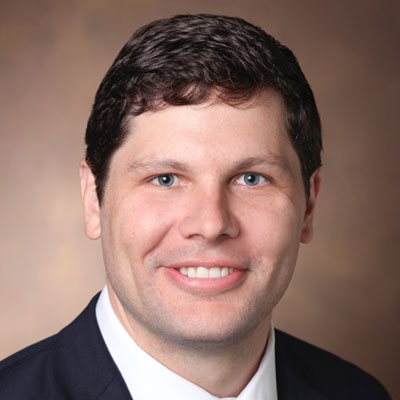Nationwide, 300,000 older adults are hospitalized for hip fracture each year. With approximately 22 percent of these patients dying within one year of the fracture, it is widely feared as the forerunner of a precipitous decline.
Evidence is mounting that the treatment selected for hip fractures and the timeframe for implementing it have a greater influence on outcomes than traditional practices would reflect. At Vanderbilt University Medical Center, leaders spanning several specialties use an enhanced recovery after surgery (ERAS) program to ensure the right resources are there at the right time to optimize hip fracture outcomes.
“As soon as the patient comes through the ED door, they are identified and placed into our ERAS pathway to ensure they are cared for expeditiously,” said Phillip Mitchell, M.D., a specialist in orthopaedic trauma at Vanderbilt. “Through this program, we are shortening the time a patient stays in the ED, protecting mentation, performing surgery the day of or the morning after the incident, and streamlining physical therapy, discharge and rehabilitation.”
Alex Jahangir, M.D., director of the Division of Orthopaedic Trauma at Vanderbilt, likens it to “working more in parallel than in series, with multiple preparations made at once.” He said, “When we do hand off the baton, our enhanced recovery protocols dictate that it is done deliberately and unequivocally, so nothing and no one gets lost in the shuffle.”
A Perioperative Surgical Home
The first ERAS program – a “perioperative surgical home” – was implemented at Vanderbilt in 2014 for colorectal surgery, and then expanded to include urologic and major gynecologic surgery. Starting in September 2020, Vanderbilt formally folded geriatric hip fracture care into the program family.
Anchored by orthopaedic trauma surgeons, providers from the ED, surgery, anesthesiology and ancillary support teams converge to plan hip fracture care and recovery. The care starts with expedited patient assessment and pain therapy upon presentation in the ED. The pathway then extends to the other end of a shortened pipeline, where physical therapists plan and follow up on rehabilitation.
“Through this program, we are shortening the time a patient stays in the ED, protecting mentation, performing surgery the day of or the morning after the incident, and streamlining physical therapy, discharge and rehabilitation.”
To support the protocol’s implementation, the enhanced recovery team includes a project manager, dashboard analytics and a design thinking team.
Eliminating Care Gaps
Studies show that longer boarding time in the ED increases the morbidity and mortality of patients with hip fracture. Factors that lengthen time to surgery include the absence of an unavailable operating room or surgical staff, and the time needed to stabilize and optimize the patients’ comorbid conditions, complete medical evaluations, and receive imaging and laboratory results.
“We are plugging these potential care gaps, where a system of even the most highly qualified providers can tragically break down and fail the patient,” Jahangir said.
Opioids and general anesthesia increase delirium risk, delay mobility and extend length of stay. These contribute to potential complications, including urinary tract infections, blood clots, pressure sores and pneumonia. The enhanced recovery tracking system minimizes patient vulnerability to these complications.
“The moment we identify a patient in the ED with a hip fracture, we initiate a consultation with the anesthesia team,” Mitchell said. “Simultaneously, the orthopaedic trauma team engages in the patient’s care, which also places them on the physical therapy and case management lists.”
Surgery is routinely performed early the following morning. To minimize delirium risk and decrease downtime after surgery, the ERAS team uses peripheral nerve blocks in the ED to numb the hip. If possible, they also use a spinal block in lieu of general anesthesia during the surgery.
A Fast Track to Recovery
By avoiding general anesthesia and minimizing narcotics, patients can more quickly get back to the floor, putting weight on their leg and sitting up for dinner the same evening following surgery. “We know that even a half-day saved with these patients can pay dividends down the line. The faster they are up and walking and into a more normal rhythm, the lower the risk of complications,” Mitchell said.
“We are plugging these potential care gaps, where a system of even the most highly qualified providers can tragically break down and fail the patient.”
“As soon as their surgery is complete, they are already getting early referrals in for rehabilitation and working with physical therapy to learn what equipment they’re going to need at home,” he added.
“The program works by establishing a consistent, standardized, patient-centric care pathway,” Jahangir said. In colorectal surgery, Vanderbilt’s ERAS program has significantly reduced complication rates. He expects the hip fracture rates to follow suit.






